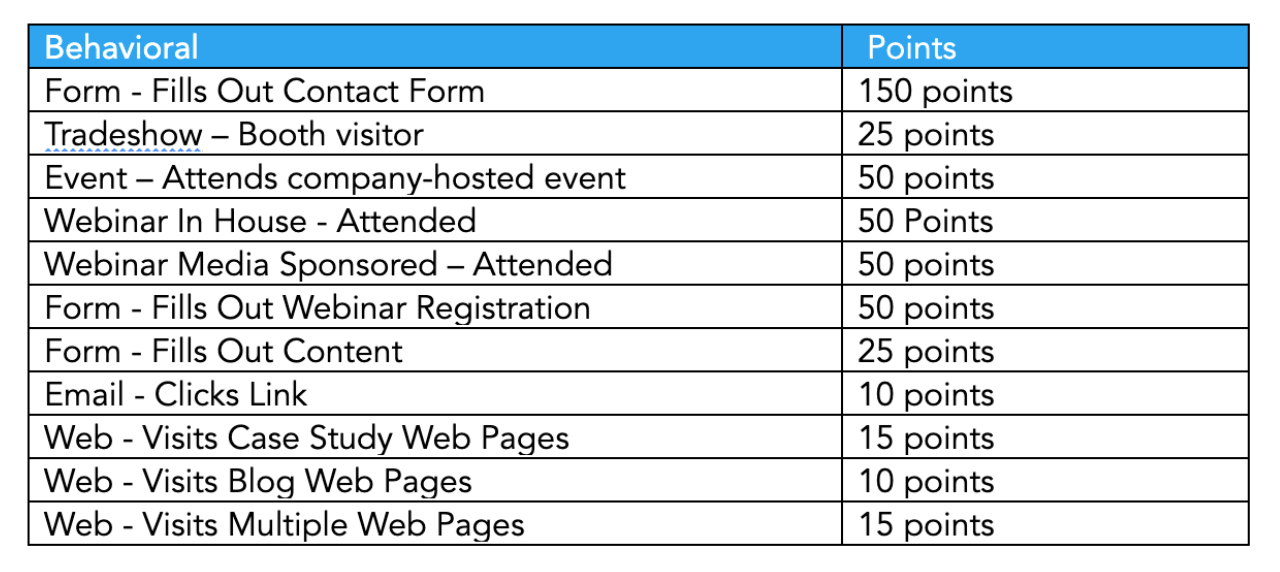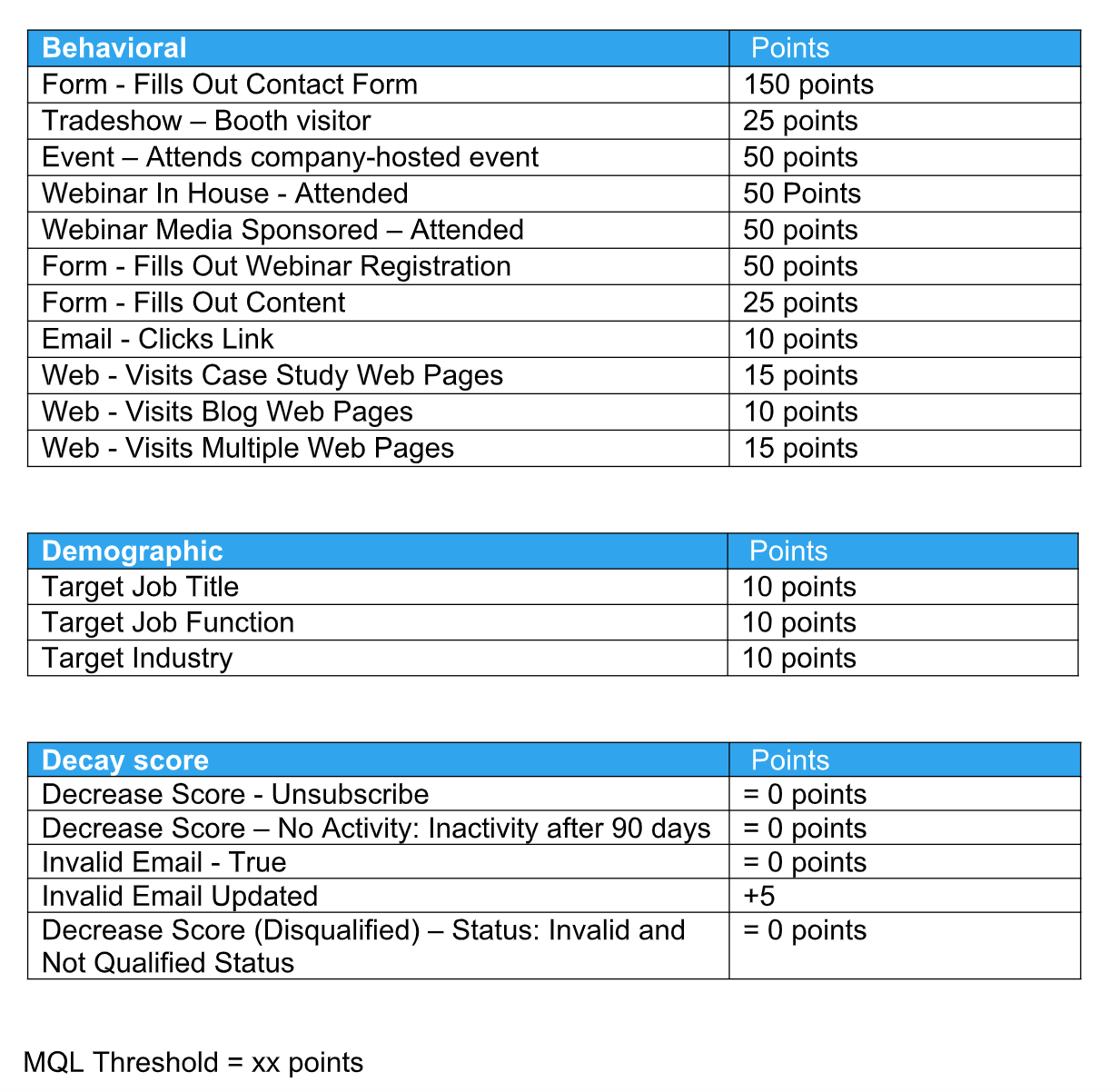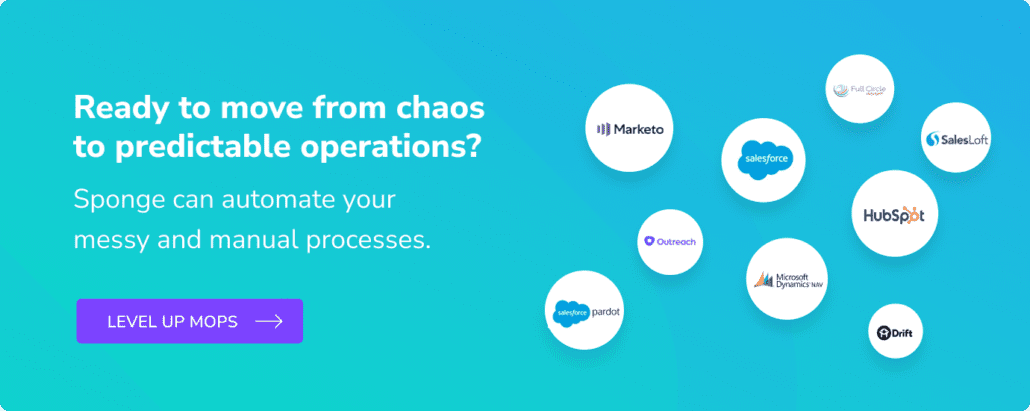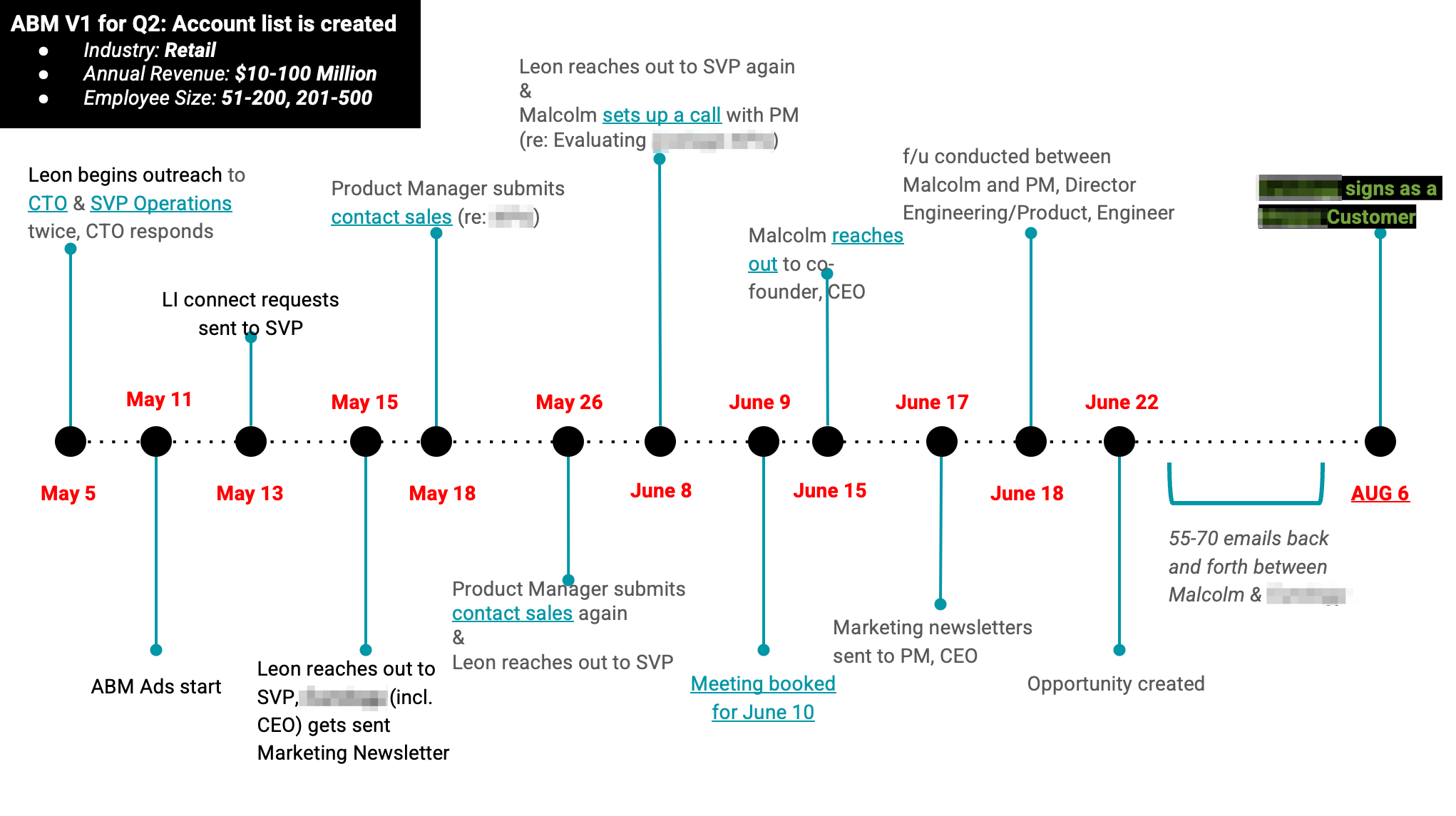Hearing “these leads are crap”? It’s time for a new-and-improved lead scoring model.
Get it wrong and bot clicks will flood your lead queue. But get it right, and you’ll improve the Sales + Marketing relationship. #goals
>> Related: How to Re-run Salesforce Lead Assignment Rules: Process Builder & Apex <<
In this post:
Video walkthrough
1. Start by taking Sales seriously
It’s key to dig deeper in Sales’ pain. Why do they feel like they’re wasting time? Are the leads “just looking”? Reps struggling to prioritize leads because there’s just too much noise? Missing SLAs because there are too many leads for Sales to handle in any given day?
No matter what, work with your sales teams to create something better, where they feel like they’re calling truly qualified leads.
2. Balance lead behavior and demographics
Lead scoring is simply a way for you to prioritize leads so you spend the most time with people that are most likely to convert. To do so, your model has to account for behavioral and demographic attributes.
The concept is straightforward: you assign different values to each attribute, ultimately blending if the person is a good fit and if they’re showing serious interest.
Download our free lead scoring template here >
The whole point is to define “who is the most important person for me to reach out to right this moment?”
- You want to give more points for better actions or better demographic attributes (like title, geography, or industry). For instance, filling out a demo form is 100 points whereas someone registering for a webinar would be 30 points.
- If someone is asking to talk to Sales (a contact us form, a demo form, or a trial form) those leads should go to Sales, full stop. Even if it’s a Mickey Mouse, even if it’s not your ideal target. For these leads, ensure a person does the qualification and not a formula on the back end.
- Assign negative points for decay — people who are inactive or have woefully incomplete contact data.
- You could also assign negative points if a lead is completely outside of your sales territory, countries, titles or industries. Use this sparingly… you never know what the future may hold (or if your country-lookup-by-IP-address is accurate).
It sounds so simple, but debating scores with your sales team, your sales engineering team, your marketing folks, and the execs will uncover huge disconnects. Write it all down and don’t focus too much on whether a demo is 150 points or 100 points. Just try and get aligned on the relative weighting of Demo versus Webinar.
3. Pick an MQL threshold
Once you’ve weighted all your behaviors and demographics, how do you decide what gets passed to Sales as an MQL?
There’s not a magic number. Instead, I always recommend the MQL threshold be driven by Sales’ capacity and their feedback. Because really, the whole point of lead scoring is to prioritize your lead follow up. We want to qualify enough leads that Sales is busy, but not so many that they can’t prioritize what’s important.
The beauty of this approach is its flexibility. Capacity isn’t a fixed state — there are ebbs and flows throughout the year. You can quickly adjust your threshold to raise the hurdle or let more leads flow through.
Remember too that an MQL is not answering “is this person an opportunity?” MQLs answer “should I call them?” This is Marketing passing the baton to Sales or BDRs, saying “Please look at this person. Call them. Email them. Somebody needs to look at it.”
4. One lead scoring model to rule them all
“I have five different products. Do I need five different lead scoring models to capture whether somebody is interested in product A versus product B? Because I really care about this industry for product A, but I don’t care about this industry for product B. I also focus on different companies and different people. So potentially I need to create five different models that’s going to capture all of that interest.”
I strongly recommend using a single model. You can usually incorporate all kinds of idiosyncrasies for different products, segments, or geographies.
Sticking with one model makes your life easier, is more scalable, and it’s clear how a lead is being scored throughout the whole buyer’s journey. It’s also easier to make (inevitable) iterations as sales territories and product lines change. Lead scoring models have to be adaptive.
5. Get started and iterate iterate iterate
When in doubt, keep it simple. Get started. Sometimes these conversations can last weeks arguing over 10 points here, 10 points there. It’s not that important. Lead scoring is best just done, and then you can evaluate whether it’s working. You don’t need tons of attributes. Get the important stuff in, and then you can refine over time. I’ve even turned on a lead scoring model without telling anybody, and let it run in the background so we could start looking at some data.
In truth, you’re never done with this. You must reexamine, make tweaks, and add information. Early on you might iterate every week. As you feel more confident the scoring is performing well, you might scale back to reviewing every quarter. Make this part of your QBRs and always reinforce the MQL threshold is flexible and based on fluctuating capacity.
And while you’re iterating, don’t forget to re-run your lead assignment rules in Salesforce! Most marketing automation platforms enable you to trigger lead assignment. But once a lead already exists in Salesforce, it’s sometimes harder to rerun those rules again.
Updated:
We recently helped a client whose Sales team was frustrated by junk leads that would never buy. We lowered the threshold on activity but tightened up the filters around title and seniority. The result? The MQL > Meeting rate jumped up 13%.
More deep thoughts on lead scoring
- Scoring Leads By Email Engagement and Clicks? Big Mistake.
- Common Lead Scoring Mistakes
- [Checklist] How to Test Lead Scoring
- How to Create Custom HubSpot Behavior & Demographic Lead Scores
- How to: Demographic Lead Scoring in Marketo
- 8 Lead Management Process Samples
- How to: Build an MQL SLA Alert in Salesforce
FAQs
What is an MQL?
MQL stands for “Marketing Qualified Lead.” An MQL is a lead that has been identified and deemed more likely to become a customer.
What is a lead score vs. a lead score model?
A lead score is a numerical value assigned to a lead based on specific criteria and behaviors that indicate their level of interest or likelihood to become a customer.
A lead score model is a framework or set of rules that determines how leads are scored based on their attributes and behaviors.
What is demographic lead scoring?
Demographic lead scoring is a method of assigning numerical values to leads based on specific demographic information such as their title, and place of work.
What is behavioral lead scoring?
Behavioral lead scoring is a method of assigning numerical values to leads based on their interactions and behaviors. It takes into account how a lead engages with a company’s digital content, website, emails, and other touchpoints. It helps businesses identify leads that exhibit actions indicative of interest, engagement, and potential conversion.
What is decay lead scoring?
Decay lead scoring, is a lead scoring methodology that accounts for the diminishing value of certain lead behaviors or interactions over time. The idea is that not all lead activities have the same level of relevance or urgency, and the value of certain actions may decrease as time passes.
What is an MQL threshold?
An MQL threshold refers to a predefined score or set of criteria that designates when a lead is considered to have qualified for marketing purposes. The MQL threshold represents the minimum score a lead must achieve to be classified as a Marketing Qualified Lead.






